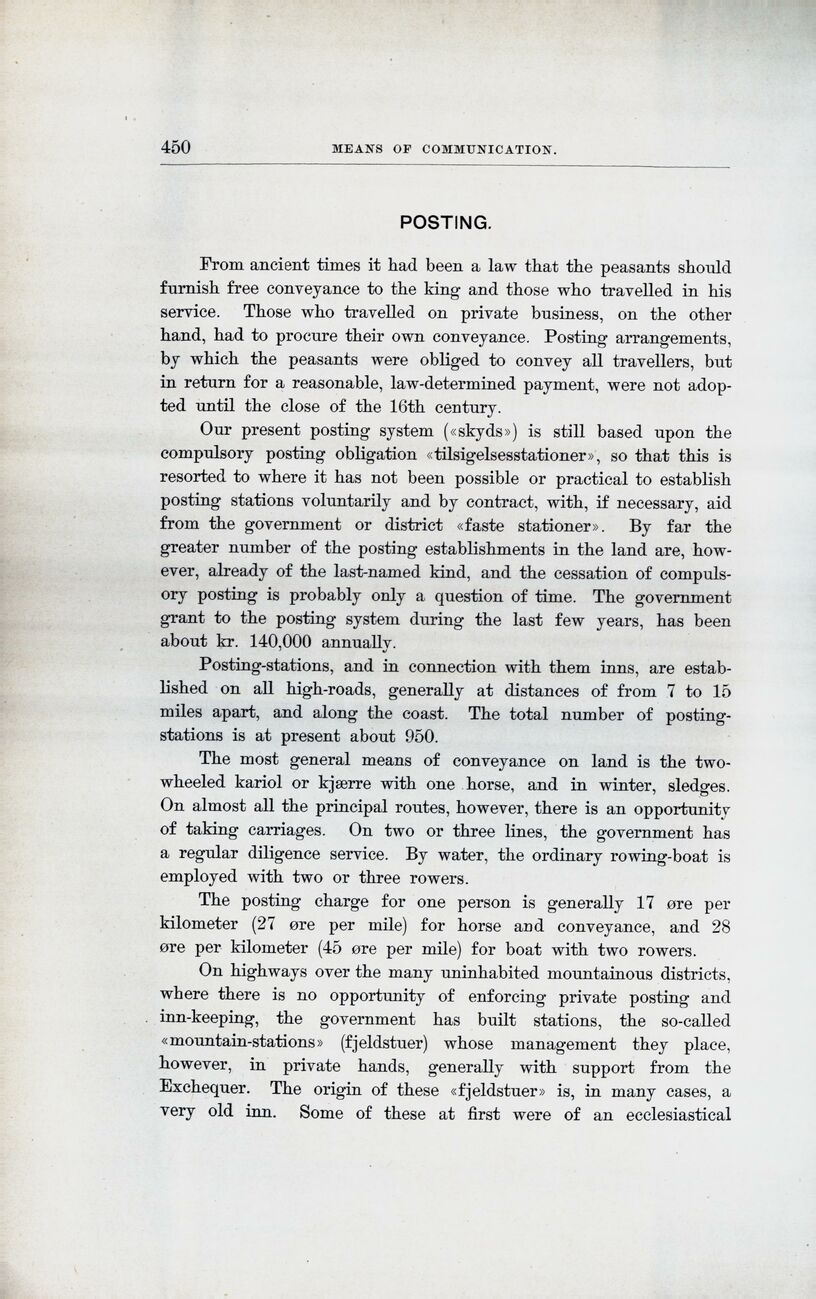
Full resolution (JPEG)
- On this page / på denna sida
- Means of Communication, by Bernh. Andersen, Andr. M. Hansen and J. T. Sommerschild

<< prev. page << föreg. sida << >> nästa sida >> next page >>
Below is the raw OCR text
from the above scanned image.
Do you see an error? Proofread the page now!
Här nedan syns maskintolkade texten från faksimilbilden ovan.
Ser du något fel? Korrekturläs sidan nu!
This page has been proofread at least once.
(diff)
(history)
Denna sida har korrekturlästs minst en gång.
(skillnad)
(historik)
POSTING.
From ancient times it had been a law that the peasant» should
furnish free conveyance to the king and those who travelled in his
service. Those who travelled on private business, on the other
hand, had to procure their own conveyance. Posting arrangements,
by which the peasants were obliged to convey all travellers, but
in return for a reasonable, law-determined payment, were not
adopted until the close of the 16th century.
Our present posting system («skyds») is still based upon the
compulsory posting obligation «tilsigelsesstationer», so that this is
resorted to where it has not been possible or practical to establish
posting stations voluntarily and by contract, with, if necessary, aid
from the government or district «faste stationer». By far the
greater number of the posting establishments in the land are,
however, already of the last-named kind, and the cessation of
compulsory posting is probably only a question of time. The government
grant to the posting system during the last few years, has been
about kr. 140,000 annually.
Posting-stations, and in connection with them inns, are
established on all high-roads, generally at distances of from 7 to 15
miles apart, and along the coast. The total number of
posting-stations is at present about 950.
The most general means of conveyance on land is the
two-wheeled [[** sjk]] kariol or kjærre with one horse, and in winter, sledges.
On almost all the principal routes, however, there is an opportunity
of taking carriages. On two or three lines, the government has
a regular diligence service. By water, the ordinary rowing-boat is
employed with two or three rowers.
The posting charge for one person is generally 17 øre per
kilometer (27 øre per mile) for horse and conveyance, and 28
øre per kilometer (45 øre per mile) for boat with two rowers.
On highways over the many uninhabited mountainous districts,
where there is no opportunity of enforcing private posting and
inn-keeping, the government has built stations, the so-called
«mountain-stations» (fjeldstuer) whose management they place,
however, in private hands, generally with support from the
Exchequer. The origin of these «fjeldstuer» is, in many cases, a
very old inn. Some of these at first were of an ecclesiastical
<< prev. page << föreg. sida << >> nästa sida >> next page >>
Project Runeberg, Sun Dec 10 21:09:24 2023
(aronsson)
(diff)
(history)
(download)
<< Previous
Next >>
https://runeberg.org/norparis/0464.html



